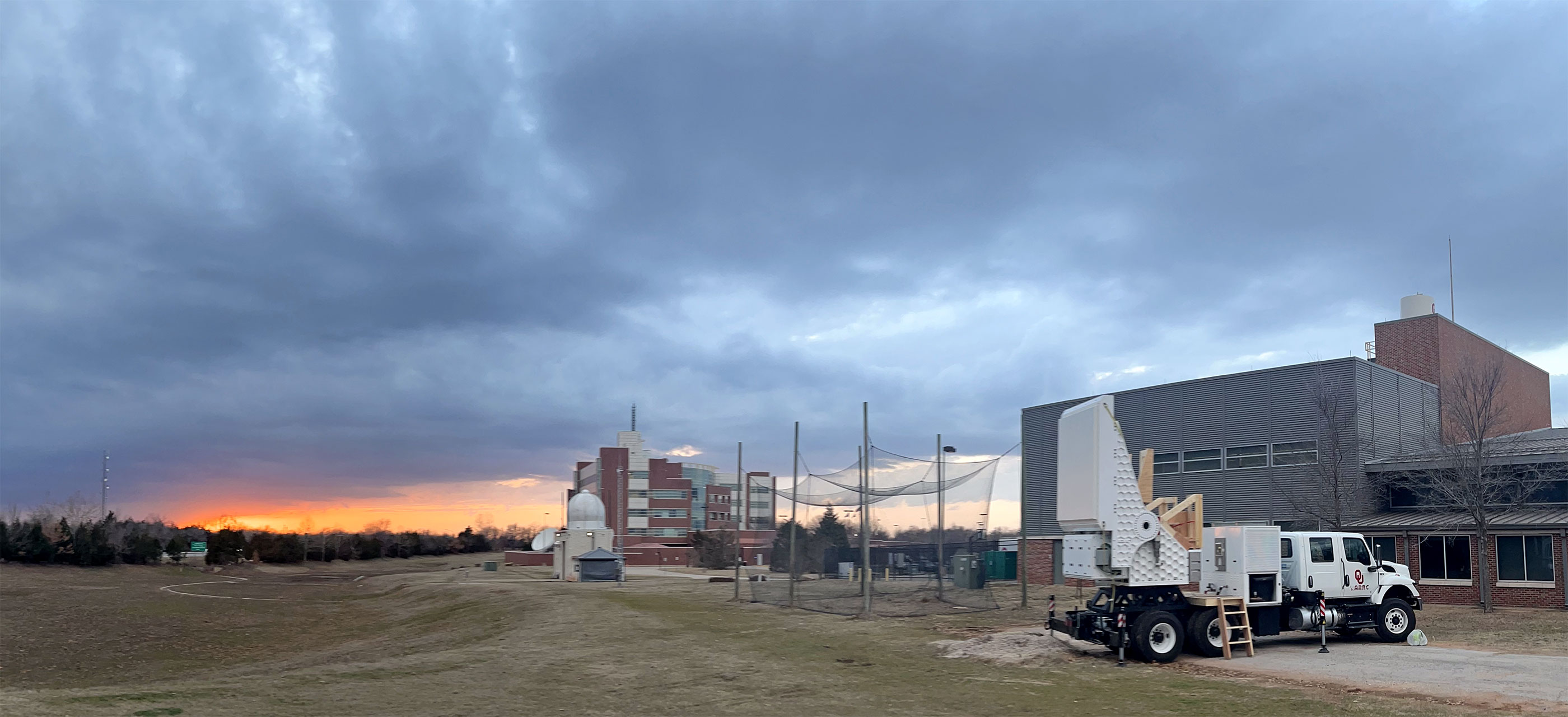Horus
All-Digital Polarimetric Phased Array Radar
 With support from NOAA's National Severe Storms Laboratory (NSSL), the ARRC has developed a fully digital
polarimetric rotating PAR system called "Horus", the ancient Egyptian sky god with
the all-seeing eye.
With support from NOAA's National Severe Storms Laboratory (NSSL), the ARRC has developed a fully digital
polarimetric rotating PAR system called "Horus", the ancient Egyptian sky god with
the all-seeing eye.
System Overview
The Horus radar is a truck-based, S-band, fully digital polarimetric phased array radar. Fully digital systems hold promise for meeting some of the greatest technical challenges facing the meteorological community, such as the effective integration of dual-polarization capability with phased array beam agility.System characteristics
- 32,000 W total peak power (10 W per polarization per element)
-
Operation frequency: 2.1-3.2 GHz (S-band)
- Wavelength: 10 cm
- Pulse length: Up to 100 μsec @ 10% duty cycle
- Pulse repetition frequency: 1-10,000 Hz
- Element polarization: ATSR / STSR / RHCP / LHCP
- Transmit waveform type: AWG / LFM / NLFM
- 25 line-replaceable unit (LRU)
- 1,600 dual-pol elements
- 2.58° broadside beamwidth with no taper
- 2.03 × 2.03 m² aperture
- 0.5 λ @ 2.951 GHz
- Electronic scan:
- Azimuth coverage: -45° to +45°
- Elevation coverage: -45° to +45°
-
Mechanical positioner:
- Azimuth coverage: 360°
- Elevation coverage: -1° to 92°
- Sensitivity:
- Better than 4.3 dBZ at 50 km
- Simultaneous dual-polarization
- Real-time I/Q data recording/processing
- A/D converter resolution: 16 bit
- Transmit/receiver bandwidth: 100 MHz
- On-board cluster for high-performance computing